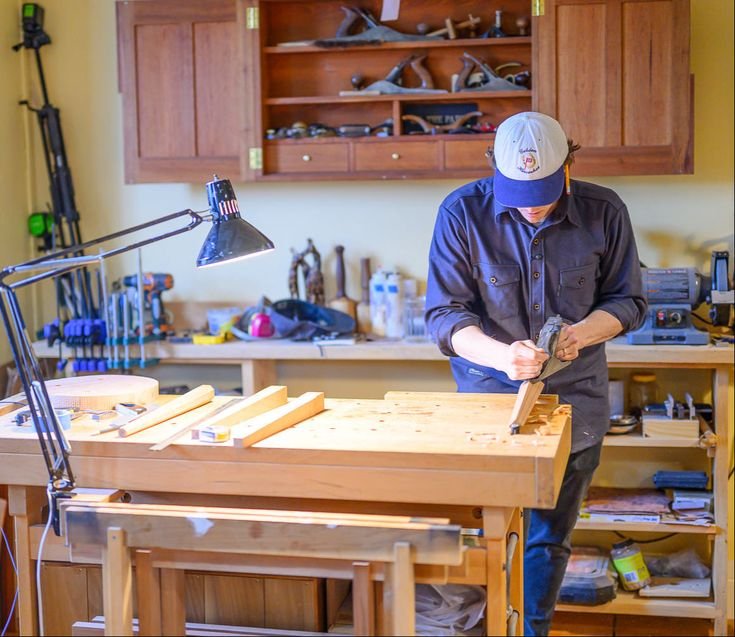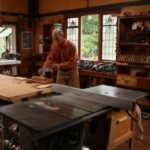Coffee and Sandpaper: Lessons from My Garage
So, picture this: it’s a chilly Saturday morning, and I’m sitting in my garage with a steaming cup of coffee, the faint smell of sawdust still lingering from last night’s project. I’m staring at a half-finished coffee table I’m trying to build for the living room. The wood’s a beautiful piece of oak, a real find at the local lumber yard—trust me, it was a steal at fifteen bucks. But, oh, boy, did I underestimate the whole sanding process.
I’ve always thought sanding was just…something you did, right? You know, like brushing your teeth or washing the car. Just an obligation you have to get through to get to the good stuff, like staining or finishing. Well, my friends, let me tell you, I learned the hard way it’s a whole art form.
The Great Grit Confusion
I decided to tackle the sanding part because how hard could it be? I grabbed a few sheets of sandpaper I had lying around: 80 grit, 120 grit, and some fancy 320 grit I picked up at Home Depot thinking it would make me look like a pro. I mean, it’s just sandpaper, right? Wrong.
The first round was with that 80 grit. I was gung-ho—sawing down rough edges like I was on a mission. The sound of that rough sandpaper scraping against the oak was oddly satisfying, like a kind of wood-symphony. But, you know when it feels like something’s too easy? I should have known better.
As I was going through it, I could feel the table starting to come alive, the beautiful grain emerging against all that rough texture. But then I switched to the 120 grit.
Oh. My. God. If I could take back that moment, I would in a heartbeat. Frustration set in quick. I noticed all these swirl marks popping up like they were the latest trend in terrible design. I almost threw the sandpaper across the room. It had that disappointing scritch-scratch sound that left me feeling like I was just rubbing two sticks together.
Almost Giving Up
There was that moment when I thought, "Why am I even doing this? I could just slap some paint on it and call it a day." I nearly stepped away completely, grumbling about how I even thought I could follow in the footsteps of my grandfather, who was like some sort of woodwork wizard. But then I took a breather, sipped my lukewarm coffee, and reminded myself how proud I’d feel seeing that table in my living room—if I could ever get it there.
I took a gamble, grabbed that 320 grit, and went back at it like I was in some kind of sanding battle. I could almost hear the grain sighing in relief, begging to be treated with the respect it deserved. And honestly, as soon as that smooth wood began to feel like silk underneath my fingers, I felt a rekindling of that initial excitement.
Finding My Flow
Once I got the hang of it, that old garage began to feel like my own little sanctuary. The sun was shining through the cracked window, mixing with the dust motes and creating this calming little universe of my own. I had music playing—just some old country tunes, the kind that reminds you of summer nights sitting on the porch—while the rhythmic sound of sanding hummed in the background.
One part of the project spoke to me more than the others, though—when I hit that spot where the wood was finally smooth enough to kiss. I laughed out loud, like I was in on some secret nobody else understood. Just me, the table, and a celebration of our hard-earned progress.
Oh, and let me tell you about the smell. The smell of freshly sanded wood is heavenly—almost like the earth telling you it’s finally time for that finish, to protect and showcase the beauty underneath the surface.
Lesson Learned
Now, here’s the kicker: I learned that sanding isn’t just a task to check off the list. It’s part of the journey. Each grain of the wood has its own story, and if you rush through it, you’re basically flicking through pages of a good book instead of savoring every word.
I ended up going with a water-based finish—thought I’d go for something easy to clean up. The first coat was a bit like applying lotion with a fork, but after a few tries and a bit more sanding (hello, second-round perfection!), I could see the reflections shimmering on the table. I took a step back, coffee in hand, and felt all those moments of frustration wash away.
A Warm Takeaway
So, if you’re thinking about diving into woodwork—whether it’s a simple shelf or a complicated table—don’t shy away from the sanding. Embrace it. Like life, there will be frustrating moments and doubt. But trust me, when you finally see that wood glow after all the hard work, it’s worth every minute you spent feeling confused and maybe even a little defeated.
Go for it, believe me. You’ll find a rhythm, a sort of flow, and you’ll end up with something that’s not just a piece of wood, but a part of your story.










